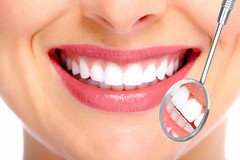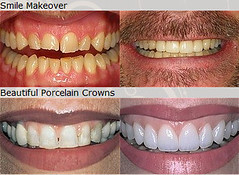 Having a perfect smile is all the rage nowadays, and with the modern technology that the dentistry industry now has, there are numerous ways for individuals to achieve the smiles that they’ve always desired. No matter whether a person is missing teeth, has an overbite, has crooked teeth or simply has a slightly imperfect smile, there is a procedure out there that can assist him or her with improving the individual’s smile. One of the procedures that is gaining more and more popularity is the one known as dental bonding.
Having a perfect smile is all the rage nowadays, and with the modern technology that the dentistry industry now has, there are numerous ways for individuals to achieve the smiles that they’ve always desired. No matter whether a person is missing teeth, has an overbite, has crooked teeth or simply has a slightly imperfect smile, there is a procedure out there that can assist him or her with improving the individual’s smile. One of the procedures that is gaining more and more popularity is the one known as dental bonding.
What Is Dental Bonding?
Dental bonding is simply a dental procedure in which the dentist applies a resin material to the tooth and then smoothens and hardens the material with a special light. The resin is specially designed to be the same color as the rest of the teeth within the patient’s mouth, and it’s essentially a durable plastic material. Once it’s hardened, then patients are left with restored smiles that even out any imperfections in their smiles.
Who Are Candidates for Dental Bonding?
Not everyone is a candidate for dental bonding. However, if individuals have teeth that are decayed or have cavities, dental bonding can sometimes be used to fill the tooth and provide it with an even appearance. Other situations during which patients might be considered for dental bonding include when they have chipped or cracked teeth, want to improve the appearance of discolored teeth or want to close spaces between teeth, make the teeth appear longer or change the shape of their teeth. Additionally, dental bonding is sometimes considered for those patients who would rather go with this route rather than get amalgam fillings. Lastly, patients who have a portion of their roots exposed due to receding gums might also be considered for dental bonding.
How Is Dental Bonding Done?
 There are three primary steps included in the dental bonding process. The first step includes preparation for the process. During the step, the dentist will likely hold up shade guides to the rest of the patient’s teeth in order to choose the best shade that most suits the rest of the patient’s natural teeth. If the patient plans on getting all of his or her teeth bonded to make them whiter, then the dentist will likely let the patient pick the shade that he or she wants his or her teeth to be.
There are three primary steps included in the dental bonding process. The first step includes preparation for the process. During the step, the dentist will likely hold up shade guides to the rest of the patient’s teeth in order to choose the best shade that most suits the rest of the patient’s natural teeth. If the patient plans on getting all of his or her teeth bonded to make them whiter, then the dentist will likely let the patient pick the shade that he or she wants his or her teeth to be.
The second part of the process is the part where most of the action occurs. Throughout this step, the dentist begins by roughening the teeth and then applying a conditioning treatment to it so that the bonding material will better adhere to the tooth. After applying the resin, the dentist works to mold and smooth it into the desired shape before an ultraviolet light or laser is shown onto the teeth in order to cause the resin material to harden.
The last step of the process consists of the dentist further shaping the tooth even after the material has hardened. Dentists will continue to trim the tooth before polishing it so that it retains the shape sheen as the rest of the patient’s teeth. The entire amount of time that it takes to bond one tooth usually takes somewhere between 30 minutes to an hour to complete.
How Long Does Dental Bonding Last?
How long dental bonding lasts varies from individual to individual and depends greatly upon how well the patients takes care of his or her teeth. Generally, though, dental bonding lasts approximately anywhere from 3 to 10 years before it needs to be touched up or replaced. By avoiding harmful activities, patients can even make their dental bonding last longer. Some of the activities to avoid include biting fingernails, chewing on hard foods or objects or using the teeth to open packages. Patients should also engage in good oral hygiene by brushing their teeth at least twice per day, flossing at least once per day and using an antiseptic mouthwash at least once per day.
References:
Colgate. “Bonding.” Retrieved on February 18, 2016, from http://www.colgate.com/en/us/oc/oral-health/cosmetic-dentistry/bonding
American Dental Association. “Glossary of dental clinical and administrative terms.” Retrieved on February 18, 2016, from http://www.ada.org/en/publications/cdt/glossary-of-dental-clinical-and-administrative-ter.
Colgate
300 Park Ave.
New York, NY10022
212-310-2000
www.colgate.com
American Dental Association
211 East Chicago Ave.
Chicago, IL 60611-2678
312-440-2500
https://www.ada.org
Images:
https://farm9.staticflickr.com/8682/16031626913_2879ceddf7_m.jpg
https://farm9.staticflickr.com/8488/8183892119_950c43f56e_m.jpg